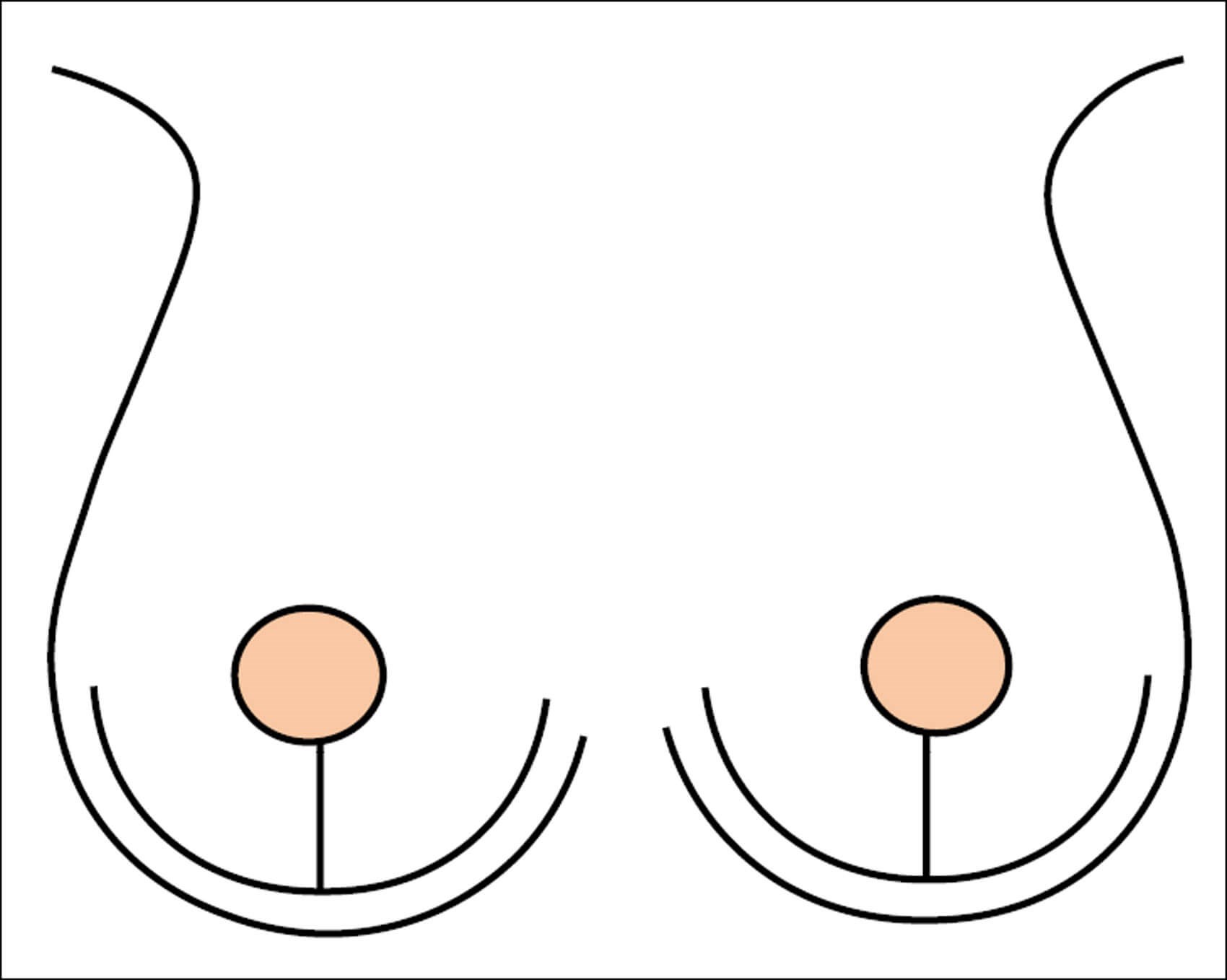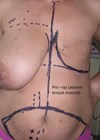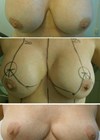Breast reduction (bilateral breast reduction or BBR) is an operation to reduce the size of the breasts, helping to improve the shape of the breasts and lifting the nipples to an appropriately higher position. Some women have difficulty with their large breasts, especially if they are out of proportion to their body and seek cosmetic breast reduction. This type of procedure can be transformational for the patient, and we are seeing an increase in the number of women undergoing surgery at an older age.
There are a number of factors contributing to the rise of this procedure’s popularity in women, and in particular the older woman. In many cases, women are finally getting to grips with breast issues which may have bothered them for years, and it is an operation that many of them have put off for a long time for various reasons.
Popularity of breast reduction in older women
As well as the health benefits from breast reduction, lifestyle and activities are taken into consideration and this can often be the driver for women with large breasts [1-3]. We are moving away from sharing images on social media platforms showing off parts of the body to posts sharing one’s interests, hobbies and sporting pursuits. Procedures to decrease size now make up 40% of all breast operations, up by more than a quarter in three years, according to the British Association of Aesthetic Plastic Surgeons. Most women who have a successful breast reduction are more comfortable with their appearance, able to wear better fitted clothing and can have an improvement in their quality of life.

Bilateral breast reduction wise pattern or anchor‑shaped scarring.
The exact pattern of scars depends on the technique used.
Women with large breasts can be self-conscious on holiday and might not be happy wearing swimwear without a further cover-up shirt. Finding clothing and underwear that fits can also be a difficulty. The popularity of reductions in the older woman is thought to be linked partly to the recent drive to stay fit and active in the prime of their life and be able to wear exercise gear for sporting hobbies and travel.
As the cosmetic industry is less of a taboo, women are more open about their cosmetic procedures and experiences, and this has had a ripple effect on women who may have once dismissed the idea. Women nowadays tend to also know of a friend or family member who successfully underwent breast reduction surgery, and this empowers them to proceed with a consultation. Celebrities of various ages, including the likes of Queen Latifah and Drew Barrymore, are open about talking about their breast reduction, which has further fuelled increasing numbers of older women seeking BBR. The increase in breast reductions among celebrities suggests comfort is taking precedence over having a larger bust size and this is clearly filtering through across ages.
A cross-sectional study involving 269 women aged between 40 and 85 years and with cup sizes ranging from A to HH, found that larger breast sizes have a small but significant negative relationship with breast-related physical wellbeing, body and breast satisfaction [4]. Surgeons considering ways to improve the health and psychological wellbeing of mature-aged women should be aware of these relationships.
Improved financial situation with age and fewer responsibilities for looking after a young family or working prior to retirement can also lead women to consider a BBR at an older age.
Specific considerations in older women
Women over the age of 40 years-old are recommended to have a mammogram before surgery to make sure there are no abnormalities in the breast tissue. The NHS breast screening programme in the UK invites women three-yearly from around the age of 50 to around 70 years old for mammography. In this age group, provided that it is up to date and has been done within 12 months of BBR, then that is sufficient.
Breast reduction surgery does not have a negative impact on identifying breast cancer in women [5]. Mammography after surgery is safe and a breast radiologist can readily distinguish post-surgical imaging findings of rearranged breast parenchyma from malignancy. Furthermore, the principles of breast reduction are often used in the surgical management of breast cancer when widely excising a malignant lesion, called a therapeutic mammaplasty, and these patients subsequently go on to have annual surveillance with mammography with no real issues.
The excess breast tissue removed during this operation should be orientated and sent to pathology for examination. Very occasionally, an occult malignancy (in situ or invasive) is found, and this can happen in the older woman as breast cancer incidence increases with age. In this scenario, should a cancer be found then oncological management is arranged accordingly.
Breast reduction is usually a safe surgery, but it is associated with potential risks and complications, including but not limited to: haematoma, infection and wound healing problems, nipple loss (full or partial), asymmetry and fat necrosis. It is important that the patient is fully counselled on the procedure and given time to process all of the information and understand the implications of surgery.
Outcomes in older women
Patients who have breast reduction tend to be pleased with the results. However, it is important that one has realistic expectations of the surgery. It is not possible to guarantee a breast cup size or shape, and it is usually not possible to get below a C or D cup following BBR. Older women, who have been used to a large breast size for decades and have been contemplating and researching breast reduction for many years, may have more insight into what the procedure means, potential benefits and overall outcomes, and ultimately how this would affect their own health and wellbeing.
Moreover, recovering from a BBR often takes more time than other cosmetic procedures, and allowing this period of recovery (at least six weeks to a few months) is essential to achieving the best outcomes and minimising complications such as delayed wound healing. Back and neck pain that the patient might have had before surgery may not be relieved by breast reduction surgery.
Physiological changes of reduced oestrogen levels that occur as women age can affect wound healing in general and it has previously been suggested that this may play a role in poorer surgical outcomes for older patients undergoing reduction surgery, specifically that age was an independent risk factor for wound infection and delayed healing. Shermak et al. analysed 1192 cases over a 10-year period and found that an age of greater than 50 years was an independent predictor for postoperative infection [6]. However, the findings of a five-year US population-level analysis study has shown no association between age as a significant risk factor itself (less than 60 years versus greater than or equal to 60 years) and 30-day postoperative medical or surgical complications [7]. This demonstrates that reduction mammaplasty can be safely performed in older patients with appropriate patient selection, and this certainly is the authors’ experience. It has also been shown previously that advanced age did not exacerbate fat necrosis or seroma development.
Careful consideration must be given to older patients, who often present with higher rates of pre-existing medical conditions, including hypertension, chronic obstructive pulmonary disease, diabetes, and ischaemic heart disease, or be on medications such as anti-coagulants and steroids, and material perioperative and postoperative risks do remain when operating on older patients with co-morbidities.
Being overweight can make the surgery more complex and increases the risk of complications. Similarly, smoking or vaping has an adverse outcome with surgery, and women would be advised to stop smoking for at least six weeks and ideally three months prior to undergoing surgery and afterwards until completely healed.
Conclusion
Breast reduction surgery has been shown to significantly improve outcomes of breast-related satisfaction and quality of life parameters, including physical, psychosocial and sexual wellbeing [8]. This type of surgery can benefit women of all ages and the older woman seeking cosmetic breast reduction should not be discouraged. A frequent saying that patients comment on after BBR is that they “wished I had done it sooner” or that “it has changed my life”.
TAKE HOME MESSAGE
-
• Older women are increasingly likely to seek cosmetic breast reduction.
-
here are specific issues that need to be considered when undertaking breast reduction in older women, but older age alone is no contraindication.
-
Mammograms are recommended in women over the age of 40 years prior to surgery.
References
1. Hope L. ‘THEY WERE PERFECT’ I hated my big boobs my whole life, I never wore vest tops and hated people staring – so I finally got a reduction at 62. The Sun 29 May 2022
https://www.thesun.co.uk/fabulous/
18665335/i-hated-my-big-boobs
-got-a-reduction/
2. Linge N, Nicholson L. Boob jobs are going bust as women opt for breast reductions instead. Daily Star 20 April 2022
https://www.dailystar.co.uk/
real-life/british-woman-opt
-breast-reduction-26758506
3. Hill N. Sally had a breast reduction free on the NHS... so why did daughter Ellie have to pay £6,000 for hers? More and more women are having surgery to ‘significantly improve quality of life’, researchers find. Mail Online Health 28 March 2022
https://www.dailymail.co.uk/health/
article-10661163/Sally-breast-reduction
-free-NHS-did-daughter-Ellie-pay-6-000-hers.html
4. Spencer L, Fary R, McKenna L, et al. The relationship between breast size and aspects of health and psychological wellbeing in mature-aged women. Womens Health (Lond) 2020;16:1745506520918335.
5. Ortiz-Pomales YT, Handa P, Newell MS, Losken A. Reduction Mammaplasty and Breast Cancer Screening. Clin Plast Surg 2016;43(2):333-9.
6. Shermak MA, Chang D, Buretta K, et al. Increasing age impairs outcomes in breast reduction surgery. Plast Reconstr Surg 2011;128(6):1182-7.
7. Nelson JA, Fischer JP, Wink JD, Kovach SJ 3rd. A population-level analysis of bilateral breast reduction: does age affect early complications? Aesthet Surg J 2014;34(3):409-16.
8. Crittenden TA, Watson DI, Ratcliffe J, et al. Outcomes of Breast Reduction Surgery Using the BREAST-Q: A Prospective Study and Comparison with Normative Data. Plast Reconstr Surg 2019;144(5):1034-44.
[All links accessed October 2022].
Declaration of competing interests: None declared.
COMMENTS ARE WELCOME










